Expert Arthroscopy Surgery in Greater Noida (Delhi NCR)
Get advanced arthroscopic surgery in Greater Noida with Dr. Himanshu Gupta, an acclaimed orthopedic surgeon.
With over 15 years of experience and 15000+ surgeries, Dr. Gupta offers state-of-the-art treatment for joint injuries and conditions, ensuring precise diagnosis and minimally invasive care.
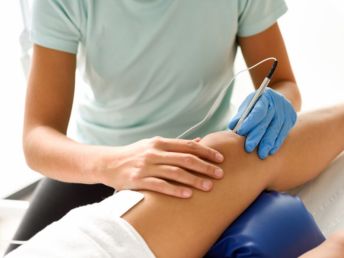
Dr Himanshu Gupta
Best Arthroscopy Doctor in Greater Noida
Meet Dr. Himanshu Gupta, an award-winning orthopedic surgeon in Greater Noida, renowned for his expertise in arthroscopy surgery and comprehensive orthopedic care.
15+ Years of Experience
Dr. Gupta brings more than 15 years of rich experience, ensuring expert diagnosis and treatment in orthopedics, backed by profound medical knowledge and skill.
15K+ Successful Surgeries
With a remarkable record of over 15000 successful orthopedic surgeries, Dr. Gupta is a trusted name for precision and excellence in surgical outcomes.
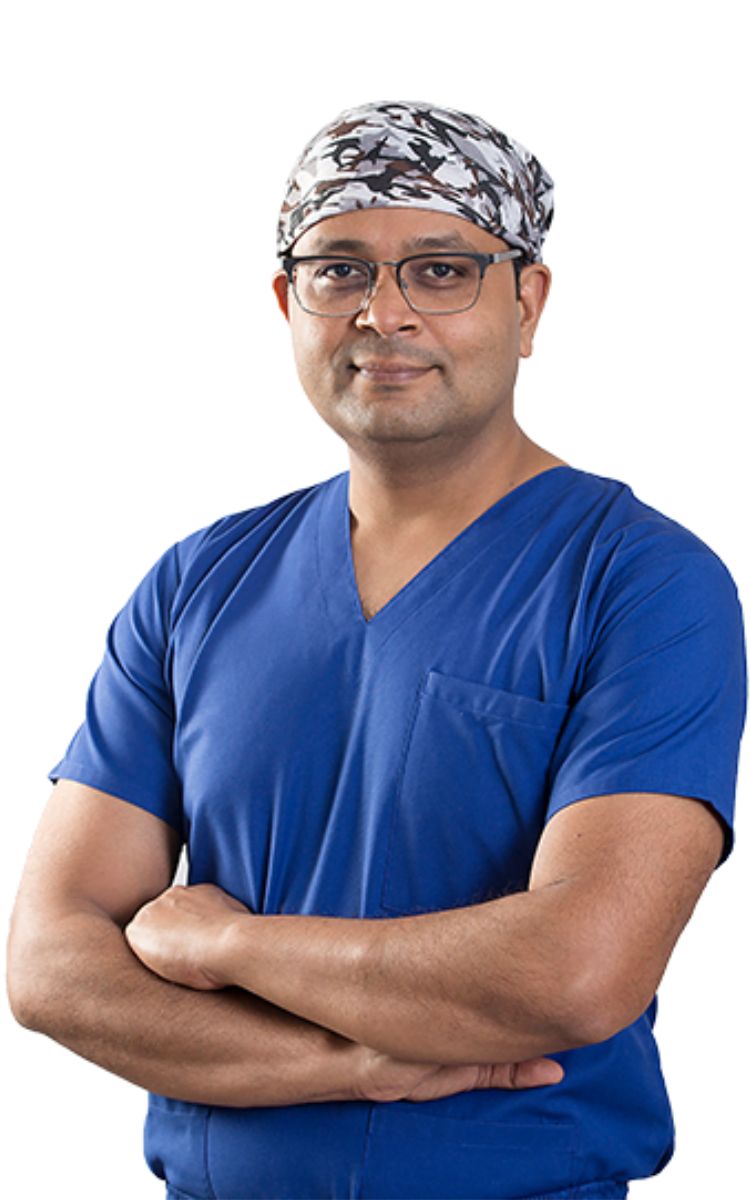
What is Arthroscopy?
Arthroscopic surgery is a minimally invasive surgical procedure used by orthopedic surgeons to diagnose, visualize, and treat problems inside a joint. The name “arthroscopy” comes from two Greek words, ‘arthro’ (joint) and ‘skopein’ (to look). The technique allows the surgeon to have a clear view of the inside of the joint through a small camera attached to an arthroscope, which is inserted into the joint through a small incision.
During arthroscopy surgery, instead of making a large incision, the surgeon makes small incisions – usually about the size of a keyhole. Through one of these incisions, the arthroscope is inserted. This camera transmits images to a monitor, allowing the surgeon to see the joint’s interior in great detail. Through other small incisions, tiny surgical instruments are inserted to repair or remove damaged tissues.
This technique is especially beneficial because it minimizes tissue trauma, leading to less pain post-surgery, reduced joint stiffness, and shorter recovery times compared to open surgery. This is particularly beneficial for patients seeking treatments like robotic knee replacement surgery, where precision and minimal invasiveness are crucial.
Arthroscopy can be used for a variety of joint issues, including but not limited to, torn surface (articular) cartilage, torn floating cartilage (meniscus), ACL (Anterior Cruciate Ligament) reconstruction, and trimming damaged cartilage. The most commonly arthroscoped joints are the knee, shoulder, elbow, ankle, hip, and wrist.
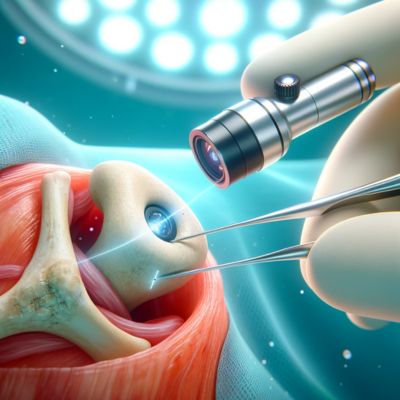
Common Types of Arthroscopy
Knee Arthroscopy
Knee arthroscopy is one of the most common types of arthroscopic procedures. It is used to diagnose and treat a variety of knee issues, including meniscus tears, ACL tears, cartilage damage, and patellar problems.
Shoulder Arthroscopy
Shoulder arthroscopy is used to address conditions such as rotator cuff tears, labral tears, shoulder impingement, and recurrent dislocations. It is a valuable tool for both diagnosis and treatment of shoulder problems.
Hip Arthroscopy
Hip arthroscopy is performed to diagnose and treat hip joint conditions, including labral tears, femoroacetabular impingement (FAI), and loose bodies within the joint.
Ankle Arthroscopy
Ankle arthroscopy is used to evaluate and treat conditions such as ankle impingement, cartilage injuries, and synovitis within the ankle joint.
Elbow Arthroscopy
Elbow arthroscopy can be performed to address issues like tennis elbow, golfers’ elbow, and loose bodies within the elbow joint.
Wrist Arthroscopy
Wrist arthroscopy is used to diagnose and treat wrist joint conditions, including ligament injuries, ganglion cysts, and cartilage damage.
Take the First Step Toward Pain-Free Living!
Book an appoitment now with the best arthroscopy doctor in Greater Noida!
Why Choose Us for Arthroscopy in Greater Noida?
Proven Track Record
With thousands of successful arthroscopic surgeries in Delhi NCR, Dr. Gupta's track record speaks volumes about his expertise and commitment to positive patient outcomes.
Personalized Care
At Dr. Gupta's hospital, every patient receives personalized attention. Your unique needs and concerns are carefully considered, ensuring a tailored treatment plan that maximizes your recovery.
Advanced Technology
Dr. Gupta uses state-of-the-art technology and arthroscopic equipment, guaranteeing the highest level of accuracy and efficiency in surgical procedures.
Minimally Invasive Approach
Choose Dr. Gupta for arthroscopic surgery in Greater Noida to benefit from minimally invasive techniques, reducing postoperative discomfort, and promoting quicker healing.
Comprehensive Orthopedic Care
Beyond arthroscopy in Greater Noida, Dr. Gupta offers a wide range of orthopedic services, ensuring holistic care for all your joint-related needs.
Award-Winning Orthopedic Care
Dr. Gupta's dedication to excellence has earned him numerous awards in the field of orthopedics, further underscoring his reputation as a top choice for arthroscopic surgery.
Patient-Centric Approach Always
Dr. Himanshu Gupta and his team prioritize patient comfort and satisfaction throughout the treatment journey, providing support at every step.
Expertise in Arthroscopic Techniques
Dr. Gupta is a highly skilled orthopedic surgeon specializing in arthroscopic surgery. His extensive experience ensures precise diagnosis and cutting-edge treatment options for joint conditions.
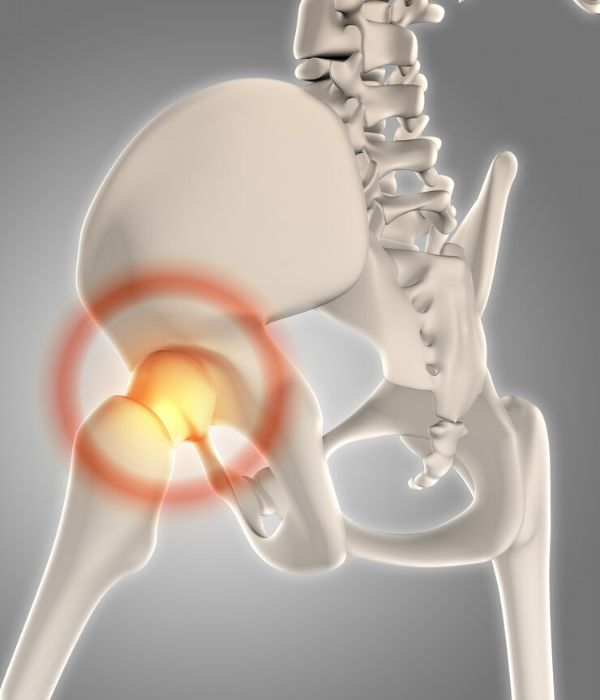
Hip Arthroscopy in Greater Noida
Hip arthroscopy is a minimally invasive surgical procedure that is used to diagnose and treat a variety of hip joint conditions and injuries. It involves the use of a small camera called an arthroscope, which is inserted through small incisions in the hip. This allows the surgeon to visualize the inside of the hip joint on a monitor and perform surgical procedures with specialized instruments.
Hip arthroscopic surgery is used to diagnose the cause of hip pain, clicking, or limited range of motion. The arthroscope provides a clear view of the hip’s internal structures, including the labrum, cartilage, ligaments, and synovium.
This type of arthroscopy in Greater Noida can be used for various procedures, including:
- Repairing labral tears (tears in the cartilage rim of the hip socket).
- Treating femoroacetabular impingement (FAI), a condition where bone overgrowth affects hip joint movement.
- Addressing hip joint synovitis (inflammation of the joint lining).
- Removing loose bodies or bone spurs within the hip joint.
Shoulder Arthroscopy in Greater Noida
Arthroscopy shoulder surgery, also known as shoulder arthroscopy, is a minimally invasive surgical procedure used to diagnose and treat various shoulder joint conditions and injuries. It involves the use of a small camera inserted through small incisions in the shoulder.
Shoulder arthroscopic surgery is used to diagnose the cause of shoulder pain, instability, or limited range of motion. The arthroscope provides a clear view of the shoulder’s internal structures, including the rotator cuff, labrum, ligaments, and cartilage.
Shoulder arthroscopy can be used for a variety of procedures, including:
- Repairing torn rotator cuff tendons.
- Treating labral tears (tears in the cartilage rim of the shoulder socket).
- Addressing shoulder impingement syndrome.
- Removing loose bodies or bone spurs.
- Treating bursitis (inflammation of the bursa sac).
- Diagnosing and treating shoulder instability (e.g., recurrent dislocations).
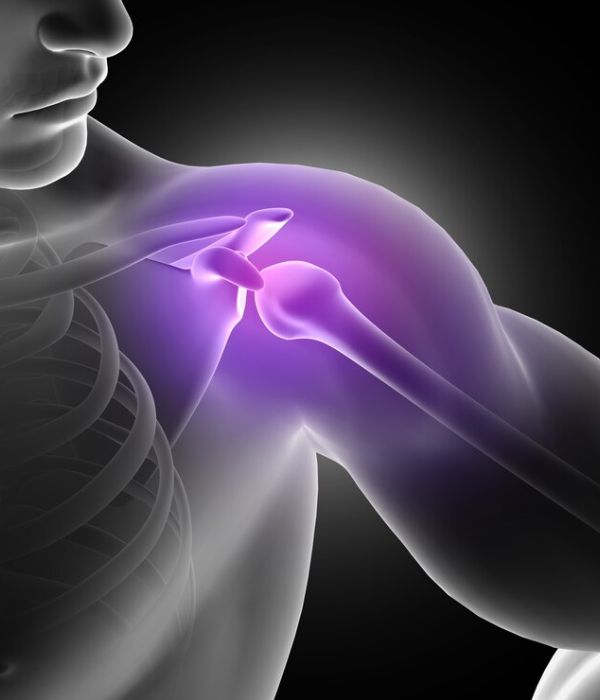
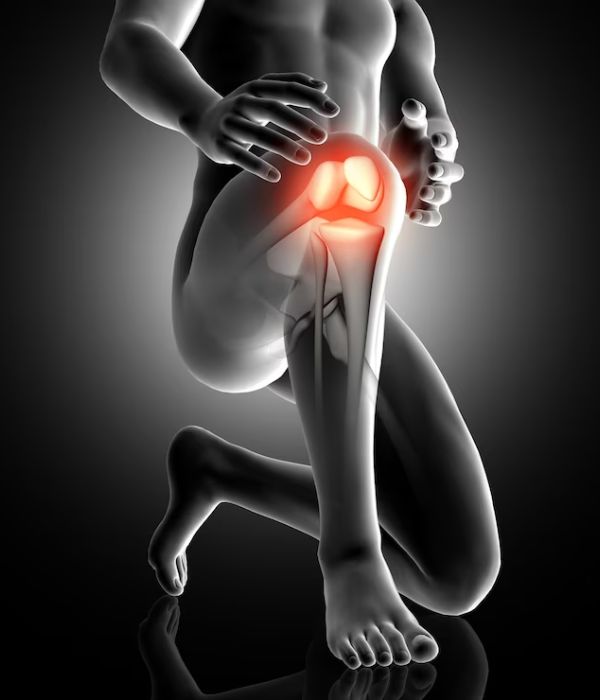
Knee Arthroscopy in Greater Noida
Knee arthroscopy is a minimally invasive surgical procedure used to diagnose and treat a variety of knee joint conditions and injuries. This allows the surgeon to visualize the inside of the knee joint on a monitor and perform surgical procedures with specialized instruments.
The knee arthroscopic surgery in Greater Noida is used to diagnose the cause of knee pain, swelling, or instability. The arthroscope provides a clear view of the knee’s internal structures, including the ligaments, cartilage, and meniscus.
Knee arthroscopy can be used for a range of procedures, including:
- Repairing or removing torn meniscus cartilage.
- Reconstructing a torn anterior cruciate ligament (ACL).
- Treating patellar (kneecap) problems.
- Removing loose bodies or bone fragments.
- Addressing synovitis (inflammation of the joint lining).
- Treating cartilage damage.
Don't Let Joint Pain Hold You Back!
Book an appoitment now with the best arthroscopic doctor in Greater Noida!
Benefits of Arthroscopic Surgery
Minimized Scarring
Arthroscopic surgery involves tiny incisions, resulting in minimal scarring, reduced discomfort, and improved aesthetics.
Faster Recovery
Patients experience quicker recovery times with arthroscopy, allowing them to return to daily activities and sports sooner.
Precision and Accuracy
The advanced technology used in arthroscopy ensures precise diagnosis and targeted treatment, enhancing the effectiveness of the procedure.
Reduced Pain
Minimally invasive techniques result in less postoperative pain, making arthroscopic surgery a more comfortable option for patients.
Lower Risk of Infection
The smaller incisions in arthroscopic surgery lead to a lower risk of infection compared to traditional open surgery.
Shorter Hospital Stays
Most arthroscopic procedures are performed on an outpatient basis, reducing hospital stays and healthcare costs.
Preservation of Healthy Tissue
Arthroscopy allows the surgeon to preserve healthy tissue while addressing the specific problem, leading to better joint function.
High Success Rates
Arthroscopic surgery has high success rates, with many patients experiencing significant improvement in joint function and pain relief.
Arthroscopic Surgery Procedure
1. Preoperative Assessment
- Before the surgery, a thorough evaluation of the patient’s medical history and joint condition is conducted.
- Imaging tests, such as X-rays or MRI scans, may be performed to assess the joint’s condition.
2. Anesthesia
- The patient is administered anesthesia to ensure they are pain-free and comfortable during the procedure.
- Depending on the case, either general anesthesia or regional anesthesia (numbing only the surgical area) is used.
3. Sterilization
- The surgical area is cleaned and sterilized to minimize the risk of infection.
4. Incision and Arthroscope Insertion
- Small incisions, typically no larger than a keyhole, are made near the joint.
- An arthroscope, a thin, flexible tube with a camera and light source, is inserted through one of these incisions.
5. Visualization
- The arthroscope’s camera transmits high-definition images to a monitor, allowing the surgeon to visualize the inside of the joint in real-time.
- The arthroscopy surgeon can examine the joint’s structures, such as ligaments, cartilage, and tendons.
6. Surgical Instruments
- Additional small incisions may be made to insert specialized surgical instruments.
- These instruments are used to perform procedures such as repairing or removing damaged tissue, removing loose fragments, or addressing specific joint conditions.
7. Treatment
Depending on the findings, the surgeon performs the necessary treatments, which may include:
- Cartilage repair or removal
- Ligament repair
- Tendon repair
- Removal of bone spurs or loose fragments
- Stabilization of the joint
8. Closure
- After the procedure is completed, the surgical instruments and arthroscope are removed.
- The incisions are typically closed with sutures or adhesive strips.
9. Recovery and Rehabilitation
- Patients are closely monitored as they awaken from anesthesia.
- Physical therapy and rehabilitation may be recommended to help regain joint mobility and strength.
- Most patients can return home on the same day as the surgery.
10. Postoperative Care
- Patients receive instructions for postoperative care, including wound care, pain management, and activity restrictions.
- Follow-up appointments are scheduled to monitor the healing process.
Arthroscopy Surgery Recovery Time
The recovery time after arthroscopic surgery can vary depending on several factors, including the specific joint involved, the type of procedure performed, the individual patient’s health, and the surgeon’s recommendations. However, here’s a general timeline for arthroscopic surgery recovery:
- In most cases, patients can go home on the same day as the surgery.
- Patients may experience some pain and discomfort, but this is typically manageable with prescribed pain medications.
- Rest and elevation of the operated limb are recommended to reduce swelling.
- Initial dressing changes may be necessary.
- The use of crutches or assistive devices may be necessary, depending on the joint and procedure.
- Physical therapy or exercises may begin to improve joint mobility.
- Pain and swelling should continue to decrease.
- Physical therapy and rehabilitation exercises become a key part of recovery to regain strength and mobility.
- Return to normal daily activities may begin depending on the joint involved, but strenuous activities or sports are usually restricted during this period.
- Follow-up appointments with the surgeon are important to monitor progress.

Who Needs Arthroscopic Surgery?
Arthroscopic surgery is recommended for individuals who have certain joint conditions or injuries that can benefit from minimally invasive surgical treatment. Common reasons why someone might need arthroscopic surgery include:
- Joint Injuries: Arthroscopic surgery is often used to diagnose and treat injuries to joints such as the knee, shoulder, hip, or ankle. This includes conditions like torn ligaments (such as the anterior cruciate ligament or ACL in the knee), torn cartilage (meniscus tears in the knee), and labral tears in the shoulder or hip.
- Arthritis: In some cases of arthritis, especially when conservative treatments have not been effective, arthroscopic surgery may be used to remove damaged tissue, smooth surfaces, or make other repairs to alleviate pain and improve joint function.
- Recurrent Joint Pain: People who experience chronic or recurrent joint pain, often without a clear diagnosis, may benefit from arthroscopic procedures to evaluate the joint and address any underlying issues.
- Cartilage Damage: Arthroscopy can be used to repair or remove damaged cartilage within a joint. This is particularly common in the knee and shoulder.
- Joint Infections: In cases of joint infections, arthroscopic surgery may be performed to drain the infected fluid and clean the joint.
- Bone Spurs: The presence of bone spurs within a joint can cause pain and limited mobility. Arthroscopic surgery can be used to remove these spurs.
- Rotator Cuff Repair: Arthroscopic surgery is often the preferred method for repairing a torn rotator cuff in the shoulder.
- Synovitis: Inflammation of the synovium (the lining of the joint) can be treated through arthroscopic surgery, which allows for the removal of inflamed tissue.
- Impingement Syndrome: This condition, which commonly affects the shoulder, can be relieved through arthroscopic procedures that address impingement and inflammation.
It’s important to note that not everyone with joint issues will require arthroscopic surgery. The decision to undergo this type of surgery is made after a thorough evaluation by an orthopedic surgeon who considers the patient’s symptoms, medical history, imaging results, and the potential benefits of the procedure. The surgeon will recommend the most appropriate treatment option, which may include arthroscopic surgery if it is deemed necessary for the patient’s condition.
FAQs About Arthroscopy in Greater Noida
What joints can be treated with arthroscopic surgery?
Arthroscopic surgery can be performed on various joints, including the knee, shoulder, hip, ankle, elbow, and wrist.
How long does arthroscopic surgery take?
The duration of arthroscopic surgery varies depending on the complexity of the procedure and the joint involved. It can range from 30 minutes to a few hours.
Is arthroscopic surgery painful?
Patients are given anesthesia to ensure they do not feel pain during the surgery. Postoperative pain is typically manageable with prescribed pain medications.
What are the benefits of arthroscopic surgery over traditional open surgery?
Arthroscopic surgery offers advantages such as smaller incisions, reduced scarring, quicker recovery times, and less postoperative pain compared to traditional open surgery.
How long does the recovery after arthroscopic surgery take?
Recovery time varies depending on the joint and procedure. It can range from a few weeks to several months. Your surgeon will provide specific guidelines for your recovery.
Will I need physical therapy after arthroscopic surgery?
Yes, physical therapy is often a part of the recovery process after arthroscopic surgery. It helps improve joint mobility, strength, and overall function.
Are there any risks associated with arthroscopic surgery?
While arthroscopic surgery is safe, like any surgical procedure, it carries some risks, including infection, bleeding, or injury to surrounding structures. Your surgeon will discuss potential risks and benefits with you.
Can arthroscopic surgery be used for knee replacement or hip replacement?
Arthroscopic surgery is primarily used for diagnostic and minimally invasive procedures. Knee replacement or hip replacement is done through open surgery.
How do I prepare for arthroscopic surgery?
Preoperative preparation involves following your surgeon’s instructions, which may include fasting, discontinuing certain medications, and arranging transportation for the day of surgery.
When can I return to normal activities after arthroscopic surgery?
Return to normal activities varies by individual and procedure. Your surgeon will provide specific guidance on when you can resume activities such as work, exercise, and sports.
What are the indications of Arthroscopy?
Arthroscopy is indicated for various joint conditions and injuries, including torn ligaments (e.g., ACL), meniscus tears, rotator cuff injuries, cartilage damage, and joint inflammation. It’s used when minimally invasive diagnosis and treatment are beneficial.
What is the cost of Arthroscopy in Greater Noida?
The cost of arthroscopy can vary widely depending on factors such as the joint involved, the complexity of the procedure, the facility, and insurance coverage. It’s best to consult with your healthcare provider or surgeon for specific cost details.
Is Arthroscopy a major surgery or minor surgery?
Arthroscopy is considered a minor surgery. It involves small incisions and minimally invasive techniques, resulting in less postoperative pain and shorter recovery times compared to major open surgeries.
What is the eligibility criteria for Arthroscopy?
Eligibility depends on the individual’s joint condition and symptoms. An orthopedic surgeon will assess whether arthroscopy is appropriate based on factors such as medical history, imaging results, and the potential benefits of the procedure.
Who should not go for Arthroscopy?
Ineligibility for arthroscopy may be determined based on factors such as severe joint instability, advanced arthritis requiring joint replacement, or certain medical conditions that make surgery risky. Your surgeon will provide guidance.
What are the different diseases treated by arthroscopy surgery?
Arthroscopic surgeons are specialized in diagnosing and treating various joint conditions and injuries. Here are some of the diseases and conditions that can be effectively treated by arthroscopic surgery:
- Meniscus Tears: Arthroscopy is commonly used to repair or remove torn meniscus cartilage in the knee, a common injury often resulting from sports or accidents.
- Anterior Cruciate Ligament (ACL) Injuries: Arthroscopic surgery can reconstruct a torn ACL in the knee, restoring stability and function to the joint.
- Rotator Cuff Tears: Arthroscopic procedures are often used to repair damaged or torn rotator cuff tendons in the shoulder, a common condition causing shoulder pain and weakness.
- Labral Tears: Labral tears in the hip or shoulder can be addressed through arthroscopic surgery to restore joint stability and function.
- Cartilage Damage: Arthroscopy allows surgeons to treat various cartilage conditions, including articular cartilage damage in the knee, which can lead to pain and reduced joint function.
- Synovitis: Inflammation of the synovium (the lining of the joint) can be treated through arthroscopic surgery, reducing pain and swelling.
- Loose Bodies: Arthroscopic surgery can remove loose bone or cartilage fragments within a joint that cause pain and restricted mobility.
- Impingement Syndrome: Arthroscopic procedures can alleviate impingement in joints like the shoulder, where bone or tissue abnormally contacts other structures.
- Osteoarthritis Management: While not a cure for osteoarthritis, arthroscopic surgery can be used to manage symptoms and improve joint function.
- Infections: In cases of joint infections, arthroscopic surgery can be performed to drain the infected fluid and clean the joint.
- Joint Debridement: Arthroscopy can be used to remove inflamed or damaged tissue within a joint, providing relief from pain and improved joint function.
- Bursitis: Inflammation of the bursae (fluid-filled sacs that cushion the joints) can be treated through arthroscopic surgery to alleviate pain and discomfort.
- Rheumatoid Arthritis Management: Arthroscopic procedures may be used in the management of rheumatoid arthritis to reduce inflammation and improve joint function.
- Dislocations: Some joint dislocations may be treated through arthroscopy to assess and repair any associated damage.
Ready to Heal?
Book an appoitment now with the best arthroscopy surgeon in Greater Noida!
Other Ortho Surgeries
Other Services
Sports Injury Treatment
- ACL Surgery in Greater Noida
- Meniscus Tears Treatment in Greater Noida
- Laberal Hip Tear Treatment in Greater Noida
- AC Joint Arthritis Treatment in Greater Noida
- Acromioplasty Surgery in Greater Noida
- Shouder Ligament Tear Treatment in Greater Noida
- Shoulder Dislocation Treatment in Greater Noida
- Rotator Cuff Injury Treatment in Greater Noida
- Tennis Elbow Treatment in Greater Noida
